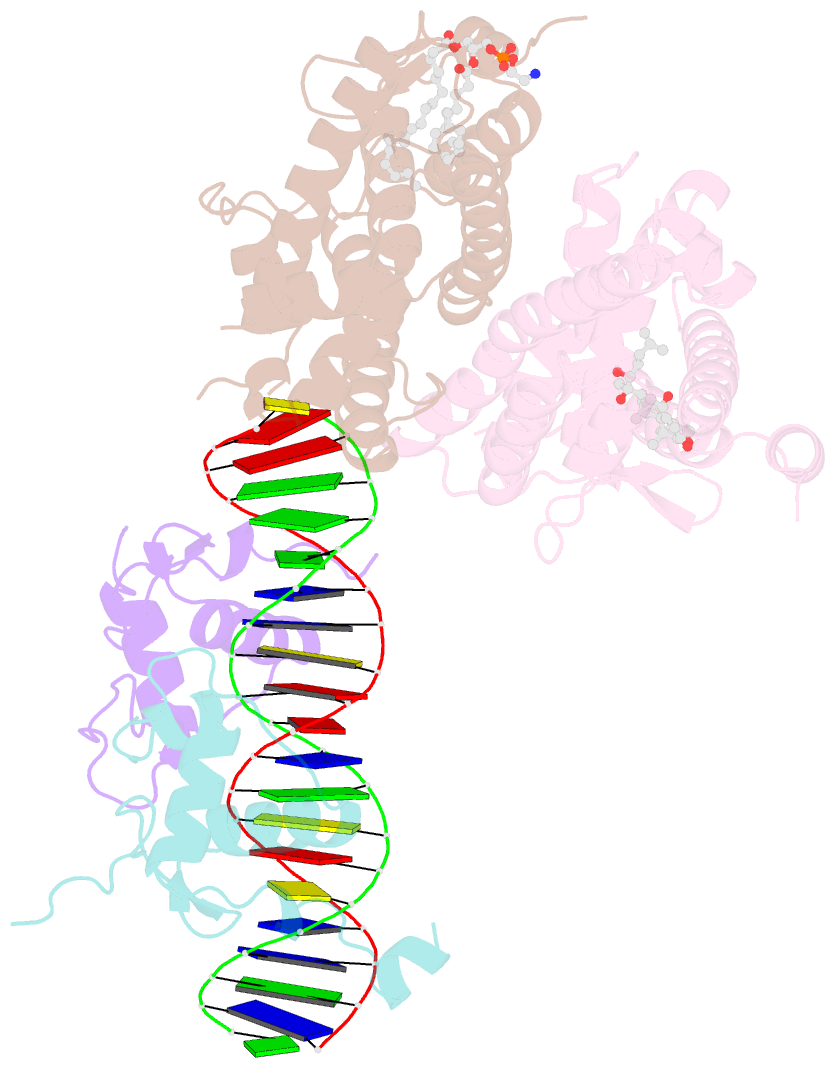Summary information and primary citation
- PDB-id
- 4umm; SNAP-derived features in text and JSON formats;
DNAproDB
- Class
- nuclear receptor
- Method
- cryo-EM (11.6 Å)
- Summary
- The cryo-EM structure of the palindromic DNA-bound usp-ecr nuclear receptor reveals an asymmetric organization with allosteric domain positioning
- Reference
- Maletta M, Orlov I, Moras D, Billas IML, Klaholz BP (2014): "The Palindromic DNA-Bound Usp-Ecr Nuclear Receptor Adopts an Asymmetric Organization with Allosteric Domain Positioning." Nat.Commun., 5, 4139. doi: 10.1038/NCOMMS5139.
- Abstract
- Nuclear receptors (NRs) regulate gene expression through DNA- and ligand-binding and thus represent crucial therapeutic targets. The ultraspiracle protein/ecdysone receptor (USP/EcR) complex binds to half-sites with a one base pair spaced inverted repeat (IR1), a palindromic DNA response element (RE) reminiscent of IRs observed for vertebrate steroid hormone receptors. Here we present the cryo electron microscopy structure of the USP/EcR complex bound to an IR1 RE which provides the first description of a full IR-bound NR complex. The structure reveals that even though the DNA is almost symmetric, the complex adopts a highly asymmetric architecture in which the ligand-binding domains (LBDs) are positioned 5' off-centred. Additional interactions of the USP LBD with the 5'-flanking sequence trigger transcription activity as monitored by transfection assays. The comparison with DR-bound NR complexes suggests that DNA is the major allosteric driver in inversely positioning the LBDs, which serve as the main binding-site for transcriptional regulators.





